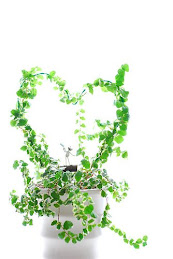
Radiator bring warm to us in winter,but when using radiator, you should be careful and there are some tips for you.Typically radiators are heating device that releases hot stream from a boiler or a water heater. Hot water radiatorsand stream systems produce these ghostly banging sounds if the condense water fails to drain properly. Home radiators have improved over the years since the companies try to manufacture traditional and contemporary designs. There are radiators designs which are always in pace with fresh, new designs that are able to blend in to the ambience of the modern home, with a wide variety of sizes and colours including striking metallic shades.
If the home radiator fails to warm up, there maybe air trapped inside. When this happens you can the vent and let the air to escape by using a tool—a square socket. Try to holding a piece of cloth under the vent and let any excess water to run out as the air is cleared.Another thing that will cause the radiators to malfunction is sludge build-up in the base of the radiator. When this occurs, the radiator will have to be removed and cleaned, however this is will tell you that the radiator needs to be flushed with a clean water, and needs to use a anti-corrosion fluid added to the small pipes and expansion tank to prevent future problems. When you notice pinholes in radiators, be aware as this is a sign of internal damage. A simple isolated pinhole can usually be sealed by a special radiator sealing fluid poured into the system. Nevertheless, this situation implies that most areas of the radiator may be affected by internal corrosion and the entire system needs flushing with radiator-sealing fluid. White paint on the radiator will likely happen because of heat, the solution is to apply a radiator paint that can withstand heat without discolouring.
A leaking radiator hose will cause your car to lose coolant and the engine to overheat. But you can usually fix the leak temporarily so that you can drive to a garage.
Step1:To do this you will need to first drain the radiator; then unscrew the nuts connecting the valve to the water pipe with an adjustable wrench, you may also need to hold the body of the valve with another wrench.
Step2:Next, unscrew the cap nuts holding the valve to the adapter on the end of the radiator. Once you have unscrewed the valve from the radiator make sure you clean the threads thoroughly.
Step3:After cleaning, wrap plumbers tape around the threads of the new valve then screw it into the end of the radiator and tighten with the wrench.
Step4:Next slide the valve cap nut and new olive over the end of the pipe and fit the valve. Using the same method as you did when removing the old valve but in reverse, hold the new valve with your wrench and line it up to the adapter, tighten the cap nuts holding the valve to the adapter and the water pipe. The radiator should now be filled with water and check for any leaks. Tighten nut caps where necessary.
Replacing a hose
You may find that the clamp is stuck to the hose (or the hose to the hose neck) by scale or rust. Don't try to pry it loose - you could damage the connection at either end, causing another leak.
Put some penetrating oil on the clamp.If it's a squeeze or spring-type clamp, squeeze and wiggle it with pliers. It should come loose.For a screw-type clamp, insert the tip of a screwdriver beneath the clamp and gently work it around.If the hose is stuck to the hose neck, twist it from left to right until it is released. If that doesn't work, cut the hose off beyond the hose neck, slit the rest of the hose lengthwise, and peel it off.
You may find that the clamp is stuck to the hose (or the hose to the hose neck) by scale or rust. Don't try to pry it loose - you could damage the connection at either end, causing another leak.
Put some penetrating oil on the clamp.If it's a squeeze or spring-type clamp, squeeze and wiggle it with pliers. It should come loose.For a screw-type clamp, insert the tip of a screwdriver beneath the clamp and gently work it around.If the hose is stuck to the hose neck, twist it from left to right until it is released. If that doesn't work, cut the hose off beyond the hose neck, slit the rest of the hose lengthwise, and peel it off.




